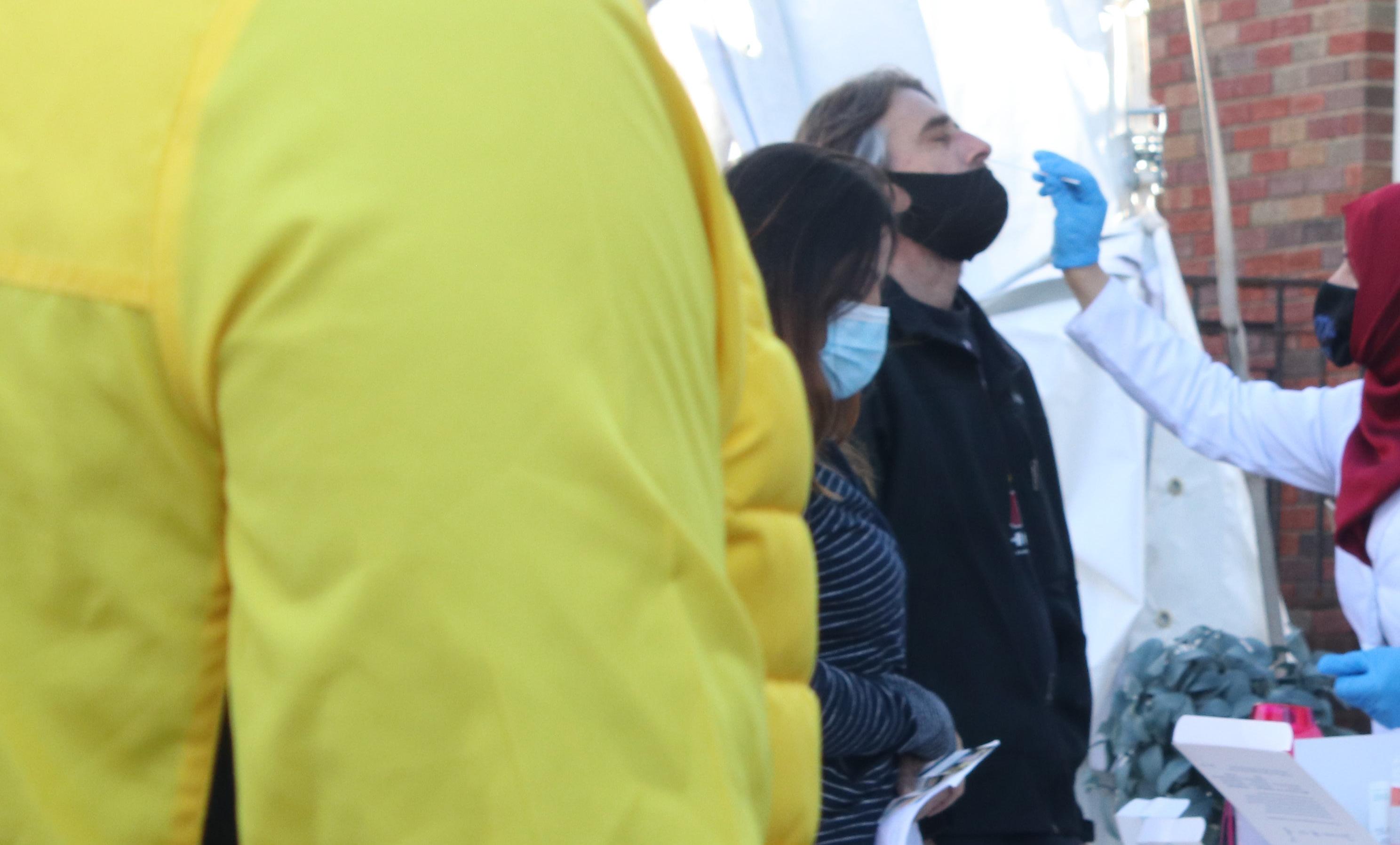
11 minute read
Uprooted with No RAFT Marilyn R. Gardner
Uprooted with No RAFT
By Marilyn R. Gardner
Advertisement
Note: This essay was originally published in September 2020 on the blog A Life Overseas. We felt that it would be especially helpful to our TCK community right now, and Marilyn was gracious enough to share it in this issue.
It is mid-September and six months since borders closed, masks became mandatory, and life changed for people around the globe. While fall is always a time of movement and change for expats and third culture kids, for TCKs transitioning to college, and for those who have tried to make transitions during the summer from their lives overseas, the tools many of us have used and used well in the past are not necessarily helpful in this new world.
Many of us have seen and used the RAFT acronym (Reconciliation, Affirmation, Farewell, and Think Transition) developed by David Pollock and Ruth Van Reken, our iconic leaders on all things TCK related. In fact, I wrote an essay on transition a few years ago, citing their acronym and connecting the dots to my own experiences. As I think about the acronym in the year 2020 and the unexpected chaos and uprootedness that a worldwide pandemic has caused, I think we may need another acronym that gives us a different tool for unexpected departures, virtual goodbyes, and long periods of waiting in the in-between.
With this in mind, I offer a few tips with an acronym that I’m calling CRAFT, because a Crisis before the RAFT changes everything!
A full disclaimer is that I have been uprooted unexpectedly myself a couple of times, but never in a worldwide crisis like the one we have faced these past six months. I come at this from a public health nurse perspective and as a writer, a TCK, and three-times-over expat. Though I have been through several difficult transitions, they were far different than what I know many of you are experiencing. So, keep what is worth keeping and blow the rest away.

Crisis Management. Response & Resilience. Aftershocks. Forging Ahead. Time.
Crisis Management – First and foremost, COVID-19 has been a worldwide crisis with a domino effect. There are three stages to crisis management: Pre-crisis—or creating a crisis management plan; mid-crisis— the point where all hell breaks loose and you respond to what’s happening in the moment while trying to put the plan into place; and post-crisis—where you evaluate how you, your family, and the team responded to the crisis and whether your plan was effective. This is the point where you refine and change your crisis management plan based on what you’ve learned.
Perhaps your organization never even had a plan to begin with and you were left trying to craft your own crisis plan with little support. Perhaps your organization had a well-defined crisis management plan, but it hadn’t been fully tested. This was the first test and it has left leadership reeling. Or perhaps your organization’s plan was comprehensive and well done, but hadn’t ever considered that there may be a worldwide crisis at the same time as the company crisis. There are all kinds of scenarios. But it is important to recognize that a crisis changes everything.
The general guidelines for phases of crisis management are to:
• Understand the three phases of a crisis
• Prepare as best as you can to handle each stage
• Identify and focus on the most critical phase.*
By now, most of us are in the post-crisis phase, but perhaps not. Perhaps a whole new crisis has come along in addition to COVID-19. Perhaps you are like my friend Mariam, who has had multiple crises along with a pending international move. Very few of us really understand crisis management, and it feels critical to have more information and understanding on this.
No matter where you find yourself in these three stages, know that this is a very real crisis. You aren’t making it up. You aren’t making a bigger deal of it than you need to. You are simply doing what all of us do in a crisis. Trying to figure out what is next.

Response & Resilience – This phase utilizes past experience. If in the past you have seen crises handled well, then your response may be far calmer than a colleague or friend’s response. As I’ve faced COVID-19 myself, I have faced it as someone who has never been risk averse, who grew up in the developing world with every year bringing another crisis. These past experiences are really different than those of my friends. In addition, I’ve faced it as someone who doesn’t have health problems. Those two realities have everything to do with the way I’ve responded. We go into any crisis with tools from our past at our disposal. The key is to remember those tools.
One of those tools is to initially focus just on the physical. The emotional pieces will come, but you don’t have the energy nor should you focus on them right now. It’s fight or flight, not fight or share your deepest feelings about what is going on. This may sound obvious to many of you, but I am an empath. The ability to empathize is a gift, but it has to be used in the right context. Someone who is bleeding out doesn’t need me to sit beside them and say “How are you feeling? How does that blood loss make you feel?” Rather, they need me to do everything I can to stop the flow of blood. Response means you respond to the immediate issue. Responding appropriately to the immediate issue builds resilience for later in the crisis.
Aftershocks – On October 12th, 1992, we experienced a 5.8 magnitude earthquake in Cairo, Egypt. It was considered “unusually destructive” for its size. We were living in an area called Maadi in a second-floor apartment. It was 3:09 in the afternoon local time and I was at home with all four of the kids. The house began shaking as windows rattled and a major wall in our apartment cracked down the center. I thought there had been a subway accident and that the subway train, a few blocks from our house, was headed our way. The noise and shaking were terrifying. I had no idea it was an earthquake, but gathered the three older ones to me. The youngest one, Stefanie, was nine months old and in her crib taking an afternoon nap. “Kids, let’s pray!” I said in desperation. In a few seconds Stefanie began to scream. I ran in just as a picture flew off the wall over her head and crashed to the ground, shattering the glass. It was terrifying. Equally terrifying were the significant aftershocks felt even days afterward. We would brace ourselves for the shaking and wonder if it was yet another earthquake.
So what’s my point? Aftershocks from a crisis can be as difficult emotionally as the crisis itself. Aftershocks come unexpectedly and set off previously felt trauma and feelings of shock and helplessness. COVID-19 has been a crisis similar to an earthquake and its aftershocks bring up all sorts of feelings. It is not you being weak. These feelings are real and they are hard. Aftershocks can continue for days, months, or sometimes even years. The larger the earthquake, the larger the aftershocks.
So, what do you do? You remain on the alert for aftershocks. They will probably come. Keep in mind that crisis management is the first step. Stay calm—this is a normal part of a massive crisis. Gather your kids to you and talk about what is going on. If you ask adult third culture kids what made the difference in making it through a crisis and building resilience, many will say that it was that their parents and other adults in their lives allowed them to talk about what was going on. Call people you trust. You too need someone who will be able to actively listen to what you are thinking and feeling.
Forging ahead with baby steps – People who have had spinal cord injuries have to learn to walk again. It happens step by painful step. This is a lot like what it is to forge ahead when you have been or are continuing in a crisis. There is the acute phase, followed by the maintenance phase. Forging ahead is the maintenance phase. What is the new routine? What can we put off, and what needs to be done today? What resources are around us that can help us with what needs to be done today? Gather your resources in a small notebook. Who are the people who can help with the practical pieces of setting up a new household or routine? Who are the people who can help with the emotional pieces? Those who won’t tell you to count your blessings, but instead will listen as you pour out your heart and, by listening, help you move forward. Who can help with the details of this life that you least expected? Who can help with the logistics of car shopping? Insurance coverage? Healthcare? All the details that go into setting up a new life? Forging ahead in baby steps sometimes just means knowing who to call for what.

Time – The last word in the acronym is “time.” In the expat world, we are always looking ahead. Part of this is the nature of the work and experience. We have to look ahead. The task of living outside our passport countries forces us to look at future actions that may include visa or residence permit expirations, transition times, future plans, and the ages of our kids as we make moves. Suddenly the pandemic has put everyone in the world in stop mode. We go from being future-oriented to not being able to plan for tomorrow, let alone what will happen in a month, three months, or a year. All the careful plans we made have crumbled and the costs in money, time, and emotional health are impossible to quantify. We have to redefine our concepts of time.
I think recovering addicts have a tremendous amount to teach us about time. A recovering addict knows that all they have is the next hour. As they face it without drinking or doing drugs or doing whatever it is that they are addicted to, they know it is a baby step in the right direction. They feel like they are climbing the walls. Their skin crawls. Their heart beats faster. And then, the hour is over. A sigh and on to the next hour. The hours turn into days, the days turn into weeks, the weeks turn into months, but they will never forget that all they have is the next hour. Recovering addicts are our teachers in this moment. Do what we must in the next hour. Then when the next hour comes, do what we must.
Maybe all we have is the next second, the next minute. So, we breathe. Because a minute is all you need right now. An hour is all you need. You can redefine time–don’t let time define you. Expect to be like the recovering addict— climbing the walls but making it through. In the words of an addict: “Over the past twenty-three years, I’ve worked to trick my brain into staying in the moment and not dwelling on the future or the past.”**
As I’ve spoken with family members after the recent death of my brother, time and time again the wonderful days and hours preceding his death have come up. By all accounts he had a joy-filled month with joy-filled minutes turning to joy-filled hours. The death that took him shocked all of us, none more so than those closest to him. But each day of the month preceding his death seemed filled with abundant life. He did not know he would die and we did not know he would die. It seemed he had learned to live each moment, and in doing so found great joy.
When it comes to time, all we really have is now. Even as I write, I know that for someone in the midst of transition, reading this could be annoying. We can have all the tools in the world, but still struggle. One of the things I love about my faith tradition is that we honor the struggle. There is life and growth in the struggle. So, I leave you with that: Honor the struggle.
*Understanding the three phases of crisis **Molly Jong-Fast as written in The Atlantic

Marilyn R. Gardner is a public health nurse and writer who has learned to call Boston home. She grew up in Pakistan and as an adult has lived in Pakistan, Egypt, Northern Iraq, and the United States. She is the author of Between Worlds and Worlds Apart: A Third Culture Kid’s Journey and writes regularly at Communicating Across Boundaries. https:// communicatingacrossboundariesblog.com/blog/ You can also find her writing in Plough magazine, Fathom magazine, Among Worlds, and A Life Overseas.










